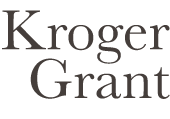The AEC industry has an overwhelmingly bad habit of talking about ourselves. From meetings with clients to quals packages to proposals to interviews, it’s all about us. Why is that? Building relationships is about give and take and creating a rapport. Yet, we tend, as an industry, to do the exact opposite. Are our firms and their employees so fabulous, we just want to share or is it simply that we don’t know what matters to the client because we haven’t asked the right questions, if any? So, by default, in person and in writing, we talk about ourselves.
How many times did you write I, we, or your company name in the last cover letter you wrote? Did you mention the client in paragraph one or later in the document? Do you rewrite each project example in your proposal to reflect the client’s needs and benefits to them? Or, did you use standard, boilerplate text? Why do we as an industry struggle with targeted communications from cover letters to quals packages to proposals to interview materials? Do we love ourselves so much we just want to keep talking about our fabulous portfolio or do we just not know how to write for a client and their needs?
Business development in the AEC world is all about getting to know potential clients. We strive to get that first one-on-one and think we’ve hit the jackpot when the client agrees to meet with us. So, what do you take with you to your initial client conversation? A large quals package? Firm resumes? Pretty pictures of your past projects? No. No. No. Remember why you’re meeting with the client in the first place: to learn! You need to understand about their business, their upcoming projects, their preferred consultants, their pet peeves. If you approach any client interaction, be it an in-person meeting or networking, leading with you and your firm, you’ve wasted the opportunity to get to know your client. And always bear in mind, you only have one chance to make a first impression. If you start by talking about yourself and your firm, you’ve essentially thrown up on your client. So, breathe. Take the time to get to know the client, find connections, and discover if they might have a need for your services in the future. Don’t blow it by presuming you know exactly what they require before you’ve even spoken.
A Few Examples:
Recently, Kroger Grant Consultants (KGC) reviewed a proposal for a hospital masterplan and an interview PowerPoint for a medical office building. Both documents, from two separate KGC clients, screamed “it’s all about me’ not you, Mr. Client. The proposal contained a cover letter full of I, Our, We and page after page of how great the consultant was from their team to their experiences, none of which tied back to the client and their requirements for the current project. The interview PowerPoint didn’t mention the client and their project, which was the point of the interview, until slide 4. Luckily, both documents were reviewed prior to submittal. KGC worked with the first client to customize every page of the proposal to scream ‘We get you. We understand your pain, and everything we’ve written shows how we, the architect, will provide value to you Mr. Client.” The interview materials were revamped to talk about Mr. Client from slide one. Each subsequent slide showed how working with this particular architect would be a benefit to the client based on their desires for this project.
Here are 5 tips for always putting your client first:
- Count the number of times you use I, We, Our, or your Firm Name in the cover letter. If it’s more times than you mention the client and their project by name, rework the letter so the client appears as the focus and star of this show.
- Take nothing but your ears, along with a pen and paper (or an Ipad) for notes to an initial client meeting. You can follow up with a quals package or anything else requested by the client.
- In addition to specific, targeted questions, such as details about an upcoming project, dig deep to find out more about the client. Ask open-ended questions to learn about their experiences and what they liked/didn’t like about past projects.
- Customize proposal documents and interview materials to talk about the benefit to the client not just your features. How does your experience on a particular past project help the client for this current project?
- If you don’t know what matters to the client, what they consider a benefit, put your pen down and ask. If it’s too late to ask, this isn’t your project. You should take a pass on this one. And, get to know the client before the next RFP.
Building relationships and ultimately building business takes commitment. Devote the time and energy to getting to know your clients, and you’ll reap rewards in the future for both your firm and yourself personally.





